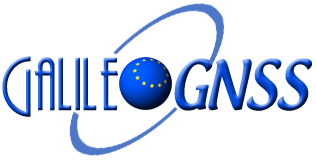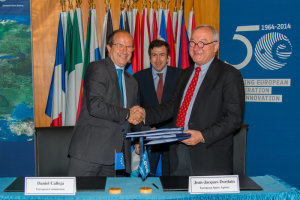The Galileo Open Service Signal In Space Interface Control Document (OS SIS ICD) contains the publicly available information on the Galileo Signal In Space. It is intended for use by the Galileo Open Service (OS) user community and specifies the interface between the Galileo Space Segment and the Galileo User Segment. Read more…
Author Archives: Galileo GNSS
Smart farming with Galileo and Egnos
The world’s population is expected to grow from almost 7 billion today to over 9 billion by 2050. In order to feed this population, the United Nations says farmers must produce 70 percent more food than they are today.
“To meet this future demand the world’s farmers must increase their agricultural productivity,” said Christian Radons of farm machinery manufacturer CLAAS. “This demand can only be met if we embrace new technologies such as satellite powered precision farming.” Read more…
The EU help Euromed countries to use Galileo and EGNOS services
With the Galileo constellation rapidly taking shape, the European Union has opened lines of communication with countries in North Africa and the Middle East with a view to assisting their governments and businesses to use the satellite services that extend across the Mediterranean. The services available to countries will be Galileo and EGNOS. The EGNOS system corrects typical GNSS errors such as the ionosphere disturbing the signal and slight discrepancies between the clocks to provide highly accurate positioning data and integrity information. Read more…
Signature ESA/EU Delegation Agreements
Jean-Jacques Dordain, ESA Director General, and Daniel Calleja Crespo, Director General for Enterprise and Industry at the European Commission, during the signature of the delegation agreement on the deployment phase of the European satellite radionavigation programme Galileo, and the signature of the 4th amendment to the delegation agreement on the further implementation of the European satellite navigation programme EGNOS, at ESA headquarters in Paris, on 16 July 2014.
First 50 Galileo fixes certified
Billions of satnav position fixes are performed daily, but determining your place in the world using Galileo system is quite new. So ESA offered to issue certificates for the very first 50 Galileo fixes, provoking responses from across the whole world.
The surprise was the extent of Galileo’s reach. While half the applications came from Galileo’s home continent, others came from the rest of the world, including Australia, Canada, China, Egypt, New Zealand, Russia, USA and Vietnam. Read more…
Galileo Increases Accuracy of Location-Based Services
Tests conducted by Rx Networks and the European GNSS Agency (GSA) confirm that Galileo provides real added value to citizens using Location Based Services (LBS). When used in addition to GPS and/or GLONASS, Galileo proved to significantly improve accuracy in challenging environments.
Rx Networks, a leading mobile location technology and services company, measured the performance of Galileo when used in various combinations with GPS and GLONASS. Conducted in such real-world environments as urban canyons and indoors, each test consisted of a three hour data capture of the GNSS signals which was later replayed to produce hundreds of fixes using a multi-constellation GNSS receiver from STMicroelectronics. Read more…
Third Galileo FOC satellite arrives at ESTEC
Latest Galileo navigation satellite has arrived at ESA’s Technical Centre (ESTEC) in the Netherlands for testing. Meanwhile the previous two satellites are ready to be launched together by Soyuz rocket this summer from the European spaceport in Kourou (French Guiana).
The new satellite travelled safely by lorry enclosed within an air-conditioned and environmentally controlled container from manufacturer OHB in Bremen (Germany). The container was unsealed only once the satellite had completed its journey by road to the cleanroom conditions in ESTEC, Europe’s largest site for spacecraft testing. Read more…

